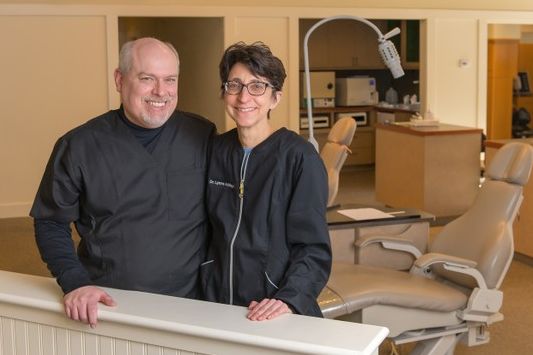SEO, or search engine optimization, is the process of improving the visibility and ranking of a website on search engine result pages (SERPs). The goal of SEO is to increase traffic to a website by improving its position in the search results for relevant keywords. SEO is a complex and ever-evolving practice that uses both on-page and off-page optimization techniques.
On-page SEO refers to the optimization of a website’s content and code in order to improve its ranking on SERPs. This includes optimizing title tags, meta descriptions, header tags, and images. It also involves creating high-quality content that is keyword-rich and informative. Off-page SEO, on the other hand, refers to the optimization of a website’s link profile. This includes link building, which is the process of acquiring links from high-quality websites. Digital marketers can use both on-page and off-page SEO techniques to improve their website’s ranking and visibility on SERPs.
Learning about SEO can be confusing, but it doesn't have to be. By reading this article you will learn what on-page optimization is and isn’t as well as how off-page marketing affects your website ranking in search engines like Google or Bing!

What is On-Page SEO?
On-page SEO is the practice of optimizing a webpage to rank higher on a search engine results page (SERP) and to get more relevant traffic. The goal of on-page SEO is to improve the quality of a webpage so that it will be ranked higher by search engines.
There are many technical aspects of SEO that can be optimized with on-page SEO, including the title, meta tags, keywords, and description. In addition, the content of the webpage must be well written and relevant to the keywords being targeted.
Examples of On-Page SEO:
Title Tags
Title tags are one of the most important on-page SEO elements, as they tell search engines what your page is about and appear as the clickable title in SERPs. Each title tag should be unique, descriptive and optimized with a keyword, and no longer than 60 characters. Including a keyword in your title tag helps improve your click-through rate from SERPs, as users are more likely to click on a result that is relevant to their search.
Headings
Headings allow you to organize your content in a way that makes it easier for readers and search engine crawlers. The best headings focus on relevant words or phrases, so they’re not over-run with keywords. These should be in H1 format for best results. In order to break up content, you can also use subheadings (H2 - H6) following the same best practices, but don’t repeat keywords or phrases throughout a post.
URL Structure
When you want to rank higher on search engines, it's important that your URLs are both relevant and optimized with keywords. Search engines take URL structure into account when ranking pages, and they should be descriptive of a page's subject, while also including keywords that are relevant.
Alt Text for Images
The alt text of an image should be descriptive and optimized with keywords or phrases to help search engines better understand what's being depicted in the photo. It can take up 125 characters, though it’s typically used to describe images to web visitors who can't see them.
Site Speed
Page load speed is a ranking factor that can make the difference between success and failure. This means it’s important to ensure fast page loads, which in turn benefits your site with higher rankings from search engines like Google or Bing.
Internal Links
Internal links are an important part of making your website easy for visitors, but they also help search engines understand the content on each page. This will result in a higher rank in SERPs and make it easier to find relevant pages that may be buried deep within the website's hierarchy.
Meta Descriptions
Meta descriptions are brief yet dynamic explanations of your content. They summarize the page’s information and entice readers with a reason to read more about what you have written. The meta description appears below both title tags and URLs, so make sure it's no longer than 160 characters.
Responsiveness
Designing a responsive website ensures that your page will display properly on any device, including mobile devices and desktop ones. This will become even more important as more and more people around the world start using mobile devices and tablets.

What is Off-Page SEO?
Off-page SEO Optimization, on the other hand, refers to all the off-site activities you can do to support your SEO efforts, such as link building and social media engagement. Link building is the process of acquiring links from other websites back to your own. Quality links help to improve a website’s SEO by signaling to Google that your site is a trusted resource on a given topic. Social media engagement also helps to improve SEO by increasing brand awareness and driving traffic back to your website. Both on-page and off-page SEO Optimization are important components of a successful digital marketing strategy.
Examples of Off-Page SEO:
Blogs
Blogging has been around for as long as the Internet has, but the practice has become more sophisticated over the years. Businesses have increasingly begun to use blogs as a way to engage audiences, and there are now a number of different ways to optimize your posts for SEO, while also reaching your target audience.
Website Landing Page Copy
Writing keyword-rich content for your website's landing pages is a great way to keep visitors engaged and help ensure that you rank higher on search engine results pages.
Videos
With video content on the rise, it’s more important than ever to have a plan for how you will utilize this new form of communication. It's not only engaging, it can also help you generate leads and convert visitors into customers by making your brand more visible on social media channels.
Infographics
Infographics are great for presenting a lot of information in an engaging, portable way. They're one of the most popular types of content you can create because they present data (such as statistics) creatively and visually with design elements like color schemes or animations.
EBooks
Ebooks are a great way to share your expertise on any given topic. They offer benefits like lead generation and establishing authority, which can help you grow email lists as well!
Case studies
Case studies are the best way of showing how your brand or products can solve customers' problems. They illustrate common issues that people face and use archetypes to make those experiences relatable. It provides you with the opportunity to demonstrate how you can solve problems these people may be experiencing, which fosters strong relationships while also increasing loyalty!
Reviews
When you get people talking about your brand or product, it creates word-of-mouth marketing. Nowadays, encouraging your customers or clients to leave a review will go a long way. This encourages other website visitors to purchase your product or service, simply by building trust.

Wrap Up: On-Page and Off-Page SEO Best Practices
There's no question that SEO is a complex and ever-changing field. What worked yesterday might not work today, which is why it's so important to keep up with the latest trends and best practices. Fortunately, there are a few SEO basics that will always remain relevant. For instance, on-page optimization is still critical for any website that wants to rank highly in search engines. This includes things like creating quality content and making sure the site's technical elements are optimized for speed, efficiency, and keywords.
Off-page SEO is also important, and the best way to approach it is by encouraging quality backlinks from authoritative sites. This sends a signal to search engines that your site is relevant and important, which will help you achieve a higher rank. Of course, SEO is always evolving, so it's important to stay up-to-date on the latest trends and best practices. However, following these basic principles will help you lay a solid foundation for success.






